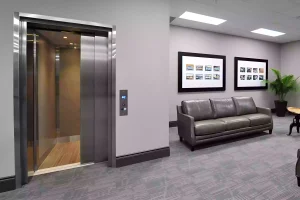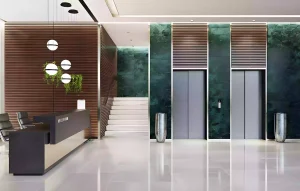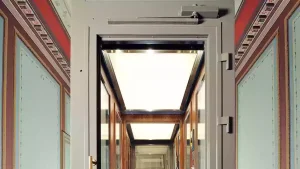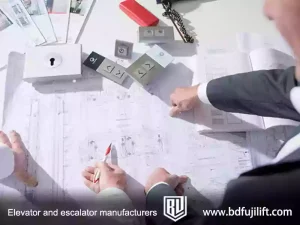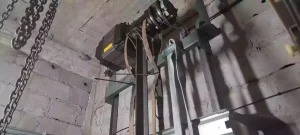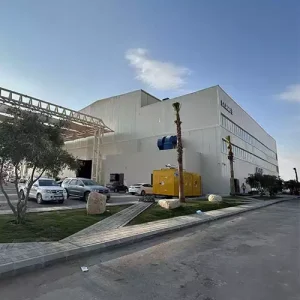A small commercial elevator is designed for buildings that need the benefits of an elevator but have limited space or lighter traffic. It offers the same convenience as a full-size commercial elevator, but in a more compact design. When planning to add one, the cost will be one of the most important things to think about.
Small commercial elevator costs can vary widely. The good news is that there are options for almost any budget and building type.
In this article, we will look closely at the small commercial elevator cost. We will compare prices for different types, share tips on finding the best deal, and explain other costs to consider before buying.
Understanding the Costs of Small Commercial Elevators
Buying a small commercial elevator involves more than just the buy price. You also need to think about other costs that can affect your total budget and long-term value. From the cost of the elevator itself to ongoing maintenance and inspections, understanding these factors is important for any business owner planning to install one.
What Is the Average Cost of a Small Commercial Elevator?
The average small commercial elevator cost can vary based on the type, size, features, and whether it’s new or refurbished.
Standard Small Commercial Elevator Prices
If you research small commercial elevator cost, you will find a wide range depending on the model and its features. Basic models for low-rise buildings can cost between $20,000 and $35,000. Newer models with advanced features—such as automatic doors or energy-efficient drives—can cost $40,000 or more.
Small commercial elevators usually serve buildings with limited space and moderate traffic. They are designed to balance performance and efficiency while keeping the footprint smaller than a full-size commercial elevator.
Premium and Custom Models
At the higher end are custom-designed small commercial elevators, which may include glass walls, unique cabin finishes, or specialized controls. These can cost $50,000 to $100,000+ depending on materials and complexity. While the upfront cost is higher, they can improve the building’s appearance and add long-term value.
| Elevator Type | Price Range (USD) |
|---|---|
| Hydraulic Small Commercial | $25,000 – $45,000+ |
| Traction Small Commercial | $30,000 – $50,000+ |
| Machine Room-Less (MRL) | $20,000 – $40,000+ |
| Custom/Glass Design | $50,000 – $100,000+ |
Factors That Affect Small Commercial Elevator Cost
The small commercial elevator cost depends on a few main things:
-
Brand and Model: Big brand names and newer models usually cost more because they have better quality and more features.
-
Type of Elevator: Hydraulic, traction, machine room-less (MRL), and screw-drive elevators have different prices because they use different parts and technology.
-
Size and Capacity: Bigger elevators or ones that can carry more weight need stronger motors and more materials, so they cost more.
-
New or Used: A new elevator costs more than a used or refurbished one, but it may last longer and have better safety features.
-
Extra Features: Glass walls, custom colors, or automatic doors will add to the price.
Knowing these factors can help you plan your budget and choose the right elevator for your building.
How to Get the Best Price for a Small Commercial Elevator
A small commercial elevator is an important feature for many buildings. It helps people move between floors easily and improves accessibility for customers, employees, and deliveries. Small commercial elevators are often used in places like:
-
Office buildings with limited space
-
Small hotels or inns
-
Medical clinics
-
Retail stores
For these needs, you will want the best elevator you can get within your budget. The first step is to work with a reliable and experienced manufacturer who can provide safe, high-quality equipment that meets your building’s needs.
BDFUJI Elevator is an ISO-certified manufacturer with years of experience producing small commercial elevators. They offer different models with a range of sizes, weight capacities, and features. By comparing models, requesting detailed quotes, and choosing the right design for your building, you can control your small commercial elevator cost while still getting the quality you need.
What Other Costs Can You Expect After Buying a Small Commercial Elevator?
There’s more to answering the question “How much is the small commercial elevator cost?” than just giving the buy price. There are other costs you should plan for.
Installation and Training
Basic installation is often included in the price, but special site work or upgrades can cost extra. If your staff needs training to operate or manage the elevator, you may need to hire a professional. Training costs can range from $500 to $3,000, depending on the level of detail.
Delivery
Delivery fees can add a few hundred dollars to the total cost, especially if your building is in a hard-to-reach location.
Maintenance
Small commercial elevators need regular maintenance to stay safe and work well. A maintenance plan can include inspections, servicing, and repairs. These plans often cost about 10–15% of the buy price each year.
Replacement Parts
Over time, some parts will need to be replaced, such as cables, control panels, or door systems. Prices can range from a few hundred dollars for small parts to several thousand dollars for larger components.
Upgrades and Custom Features
If you add upgrades like automatic doors, energy-saving systems, or new finishes, the cost will increase. Upgrades can start at $1,000 and go up depending on the features.
Operating Costs
You will also have ongoing operating costs such as electricity and safety inspections. While these are smaller compared to maintenance, they should still be part of your budget.
Conclusion
A small commercial elevator can make your building easier to use and more valuable. The small commercial elevator cost will change based on the model, features, and how it is installed. By working with a trusted maker and choosing the right design, you can get an elevator that fits your budget and will last for many years.
BDFUJI Elevator is an ISO-certified maker of small commercial elevators. Their products meet safety rules and give reliable service. With good planning and the right partner, buying a small commercial elevator can be a smart choice for your property.



